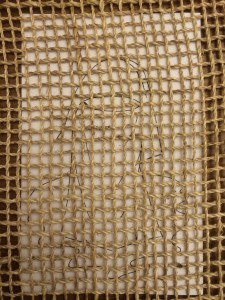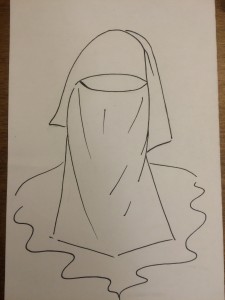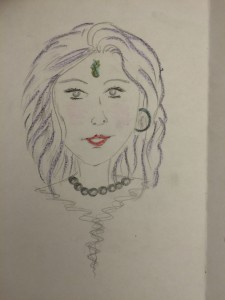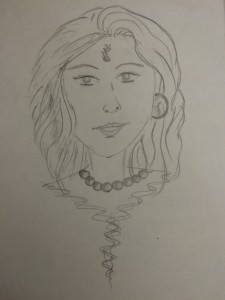We Sinful Women
Stemming from our discussion of We Sinful Women; I was most intrigued by the different notions of “Hijab”. I was always under the misimpression that it was a requirement of Muslim women, under the name of religion – but after reading the specific mentions of modesty in the Quran, I think I understand it better. Personally, I think the levels and nature of “modesty” can differ from person to person – while some might believe in modest clothing, others could prefer modesty in behaviour and interactions with others. This distinction, and such interpretations, should be more widely understood and accepted; however, for this change, we need greater religious literacy.
My piece of art shows different versions of the Hijab, either through a purdah screen (as mentioned in Sultana’s Dream), or through a Burqa or even through make-up. Despite the nature of the Hijab, the woman behind it is the same. What she wears can never change that. Her essence cannot be determined by her physical appearance – and we need to remember that. No one form of Hijab is better or worse than the other – as long as it is the woman’s decision to wear it. It is when such decisions are superimposed on women, by the patriarchy or in some contexts the government, that we may question the reason behind such an imposition. My personal interest in women’s dress-code in Muslim majority countries, was sparked by My Stealthy Freedom – the popular movement to liberate women in Iran, where women must cover their hair as part of a formal islamic dress-code. The notion that women covertly take pictures of their hair, and feel a sense of independence and pride at this momentary freedom highlights the injustice in their society. However, this is not a critique of the religion – but of the political authority and leadership in Iran. Personally, I love when women in the UK or USA proudly wear head-scarves, or any form of Hijab, and defend their right to do so – because you can see that it is a part of their identity, which they have chosen. For me, it’s like wearing Indian clothes – yes, it is more modest clothing, but it is also my choice.





Leave a Reply